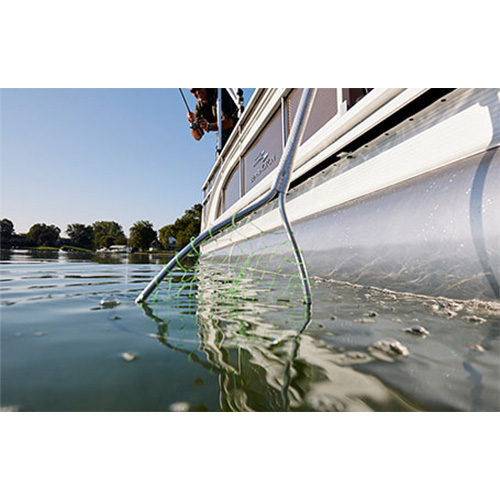
Can Pontoon Boats Pull Wakeboarders?
One of the nice features that pontoon boats are known for is the small wake they generate. A small wake means the hull shape is efficient, wasting little energy pushing a lot of water out of the way. It also means you can go faster in "no-wake" zones, along shorelines where a large wake would contribute to erosion, and in areas where a wake would disturb anchored boats, swimmers, anglers and others who share the water with you.
For wakeboarding though, a small wake means fewer big jumps, less "air," and less of what the sport is really about -- for experienced riders. For beginners, a pontoon boat makes for a fine learning platform. Their modest wakes are appropriate for riders who are just learning how to "start" in the water and stand up on the board, how to cross wakes while remaining in control, and how to start taking small jumps.
Learn the Hand Signals
Before you begin, the boarder and the spotter in the boat must know these hand signals so they can communicate:
- Speed up = thumbs up
- Slow down = thumbs down
- Maintain speed = OK signal (circle with the thumb and index finger; other three fingers raised)
- Turn = hold index finger up, make a circle with your arm, then point left or right
- Back to the dock = pat on top of the head
- Stop = slashing motion across the neck ("kill it")
- I'm okay (after a fall) = both hands clasped over head
Driver Tips
The boat driver is an essential participant in the rider's success. Starts must be made gradually and speed should be increased steadily, not abruptly. For small children just getting started, a maximum speed of about 12 miles per hour is appropriate. Adults and heavier riders will need 15 to 20 miles per hour to get up.
The boat should have a spotter to watch the boarder and communicate with the driver, who should be watching the water ahead.
After a rider gets up, make turns gentle and wide. If the rider appears to be getting out of control, slow down. When a new rider takes a small jump, slow down a bit to avoid giving him or her a jerk on the landing.
Getting Up
Getting on your feet is the biggest challenge a new rider faces. The starting position is floating in the water with your knees drawn up to your chest, facing the boat, with the tow rope over the board, which is right in front of you. After giving the "go" signal (same as "speed up") and the boat starts to pull you forward, keep the board moving sideways through the water, with the forward edge raised. As the pull begins to lift your body from the water, keep your knees bent and allow the pull to pivot the board so that your dominant foot rotates to the rear. (Which side is dominant will happen automatically. For most right-handed people, it's the right foot, but don't worry about this.)
As the board pivots in line with the direction of travel, don't twist your body to face the boat: keep it facing across the board. Keep your knees bent and your arms slightly bent as well.
Make your first gentle turn by tipping your toes down to head the direction you're facing, or pulling your toes up to go the opposite way. Try crossing the wake under control and in contact with the water. Don't try jumping until you've mastered basic riding and turning skills.
After the rider reaches the stage of being able to jump small wakes, it's possible to increase the wake size of a pontoon boat by shifting weight toward the stern. Movable weight usually means passengers, so get everyone into the rearmost seats, and the boat will kick up a bigger wake.
Want to try wakeboarding on a pontoon boat that also fishes, cruises, entertains, and provides plenty of fun for other towables? Click here to find a Bennington dealer near you.












